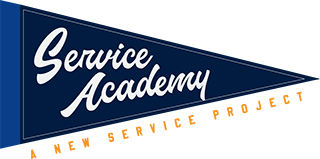
When we started planning our gap year, we were hit by what felt like a tidal wave of options.
From volunteer opportunities around the world to experiences closer to home, the sheer variety of gap year programs left us feeling almost as overwhelmed as we were inspired.
With so many possibilities for adventure and growth, how could we even begin to ensure we were making the right choices?
Navigating this question taught us something important: Choosing the right gap year program doesn’t have to be a nightmare. In fact, it can be an enlightening journey in itself.
In this post, we’ll walk you through our process of selecting gap year programs. We’ll share the strategies that worked for us, the pitfalls we encountered, and the lessons we learned along the way.
Whether you’re just starting to consider a gap year or you’re knee-deep in program brochures, we’ve got you covered. Let’s dive in!
Overwhelmed by Opportunity
When Thomas and I sat down during our junior year to plan our upcoming 15-month break, we naively thought choosing gap year programs would be a breeze. We couldn’t have been more wrong!
The sheer number of possibilities was staggering. Endless lists of programs, people, and places we could engage with flooded our screens and our minds. Instead of excitement, we felt bogged down by the weight of our own curiosity.
One cold spring night stands out vividly in my memory. There I was, hunched over my computer, with no less than two dozen tabs open — each showcasing a different, equally exciting program. For every option we crossed off our list, two more seemed to appear. It felt like trying to empty the ocean with a teaspoon.
Talking to Thomas, I discovered he felt the same way.
That’s exactly why we’re writing this blog post. Consider it the “cheat sheet” we wish we’d had during those overwhelming moments.
Like any journey, ours began with a first step…
Back to the Basics: Define Your Goals
Throughout our journey with Service Academy, we’ve always said: Start with you!
To us, that means starting with self-reflection. What are your goals, your skills, your resources, and your areas for growth?
Choosing a program is no different — we had to go back to basics.
Here’s how we started:
- Self-assessment: We each took time to jot down our:
- Skills we wanted to improve
- New abilities we hoped to acquire
- Places we dreamed of exploring
- Ideas we wanted to grapple with
- Compare and contrast: When we compared our lists, we discovered:
- Shared desires: We both craved adventure and cultural immersion.
- Individual twists: Thomas yearned for outdoor physical challenges, while I focused on understanding global perspectives on giving back.
- Common values: We both wanted time with our little brothers, and opportunities to surf, attend concerts, and meet new people.
- Refine your criteria: These insights became our foundation for evaluating programs. For example, we crossed off the idea of being surf instructors. While fun, it didn’t align with our main goals of adventure and cultural immersion.
Key Takeaway: Start by defining what matters most to you. Your personal goals will be your compass in navigating the sea of options.
Tap into Your Network
Once we had a clearer vision, our next move was to ask around!
Our best resources for finding and choosing programs were our friends, family, mentors, and even school faculty.
We asked everyone we knew if they had suggestions or knew of any programs that aligned with our goals. Not only did they deliver, but they helped us refine our set of goals even more!
Our school’s college counselors were especially helpful – they had tons of experience with students taking gap years and had the inside scoop on making those experiences successful.
Our network led us to some of our most exciting opportunities. Take our mountaineering trip in India, for instance. We’d never considered such an expedition until Thomas’ friend regaled us with tales of their adventure through the same organization. Their story illuminated how perfectly a mountaineering course aligned with our goals – we were instantly captivated!
Similarly, our ski instructor certification program emerged from a casual conversation with a beloved coach. Sharing his gap year experience of teaching a ski racing team, he planted the seed for what became a cornerstone of our plan.
But the crown jewel of our gap year – our program in South Africa – came through our involvement with the Youth Volunteer Corps (YVC). This connection opened doors to an opportunity we might never have discovered otherwise.
Key Takeaway: Your network is a goldmine of opportunities and advice. Don’t be shy, ask around…The perfect opportunity might be waiting right under your nose!
Making Sure it’s Legit
With our list of potential opportunities in hand, we faced a crucial question: “How do we ensure these programs are legitimate?”
We wanted to feel certain these programs would actually give us the experiences we wanted.
Here’s what we learned:
Trust your instincts: After gathering information, reflect on whether the program truly aligns with your objectives.
Trust your network: The beauty of finding programs through your connections is that they already come with a built-in level of credibility. For example, the friend who recommended our Himalayan adventure had a transformative experience during their time with the organization, and they gave us the confidence that it was the right choice for us (while also kindly answering our numerous questions).
Do your homework: Not all opportunities come from your personal connections. That’s when we turned to the internet. While online reviews were helpful, what really made the difference for Thomas and me was reaching out directly to the program and speaking with people who had completed it. Hearing firsthand what the experience was like day-to-day, and getting our questions answered directly helped us feel confident that the programs we chose were the right ones.
Ask the right questions: Prepare a list of questions that address your specific concerns and goals.
Key Takeaway: Ensuring a program’s legitimacy requires effort, but it’s crucial for a successful gap year experience. It’s the same as social impact: the more you learn, the better equipped you’ll be to make the right decision.
So, What’s the Gist?
Choosing our gap year programs was an adventure in itself, teaching us valuable lessons:
- Self-reflection is key: Understanding what truly matters to you is the foundation of a fulfilling gap year.
- Leverage your network: The people around you can be your best resource for discovering opportunities.
- Do your due diligence: Research thoroughly to ensure programs align with your goals and are legitimate.
- Stay open to surprises: Some of the best opportunities may come from unexpected places.
- It’s a journey: The process of choosing is as valuable as the gap year itself, helping you reflect on your values and decision-making process.
We hope our journey provides useful insights as you plan your own gap year. Remember, it’s about finding what excites you, asking the right questions, and making choices that reflect your aspirations.
Thank you for your continued support! We’re excited to see where this adventure takes us — and you!
– Ryan Growney
About Our Gap Year Journey
We’re Ryan and Thomas Growney, twin brothers and co-founders of Service Academy.
After graduating from St. George’s School in Rhode Island, we’ve embarked on a gap year to explore how different cultures approach problem understanding, community engagement, service, and social innovation.
Our journey will take us to various countries, including South Africa, where we’ll participate in the Tilting Futures program, and the Himalayas, where we’ll be joining the NOLS for a high-altitude mountaineering challenge. Throughout this year, we aim to challenge our assumptions, broaden our perspectives, and gather insights that will help us enhance our approach to social impact back home.
Ryan is particularly interested in scaling service initiatives to develop young leaders, while Thomas focuses on the personal connections and community belonging that service creates. By sharing our experiences, we hope to contribute to a broader dialogue about service, mentorship, community engagement, and cross-cultural learning.
We invite you to follow along with our journey, engage with our reflections, and share your own insights about service in diverse contexts.
Together, we can work towards creating more meaningful and impactful youth service ecosystems that benefit both young people and their communities.
